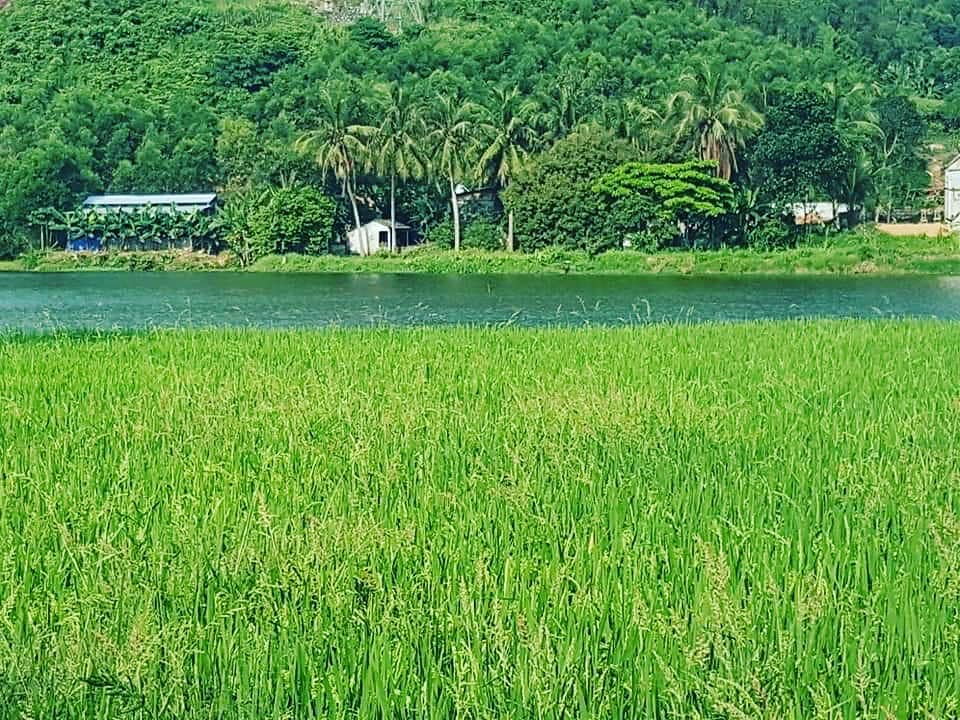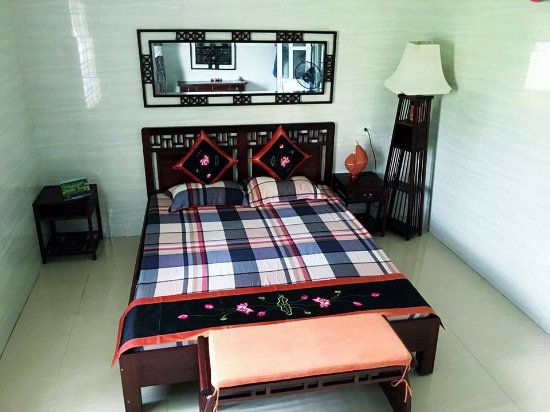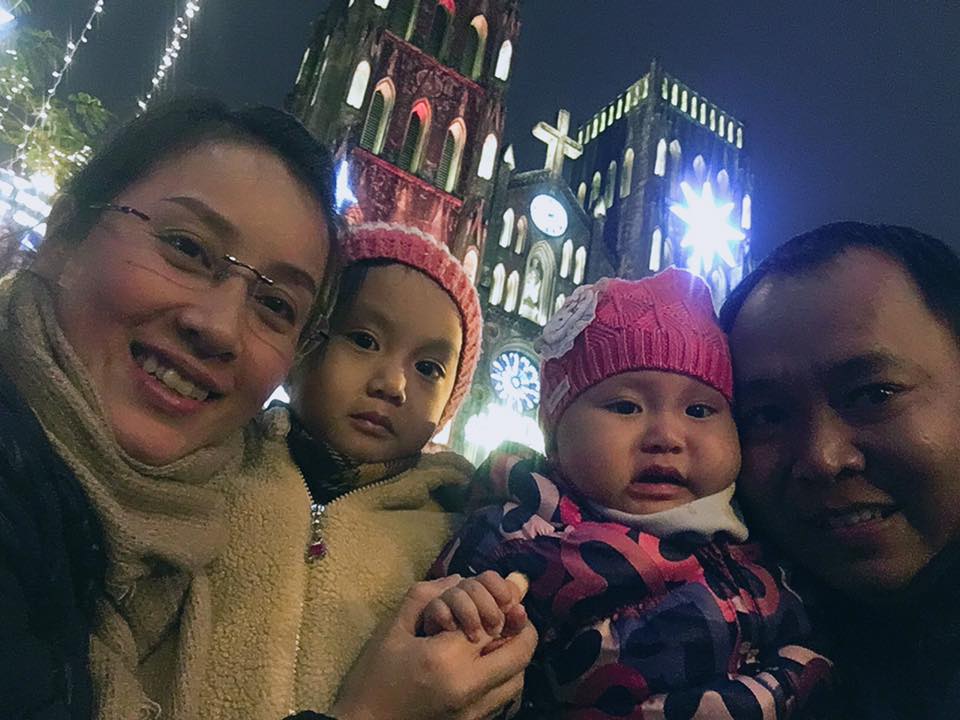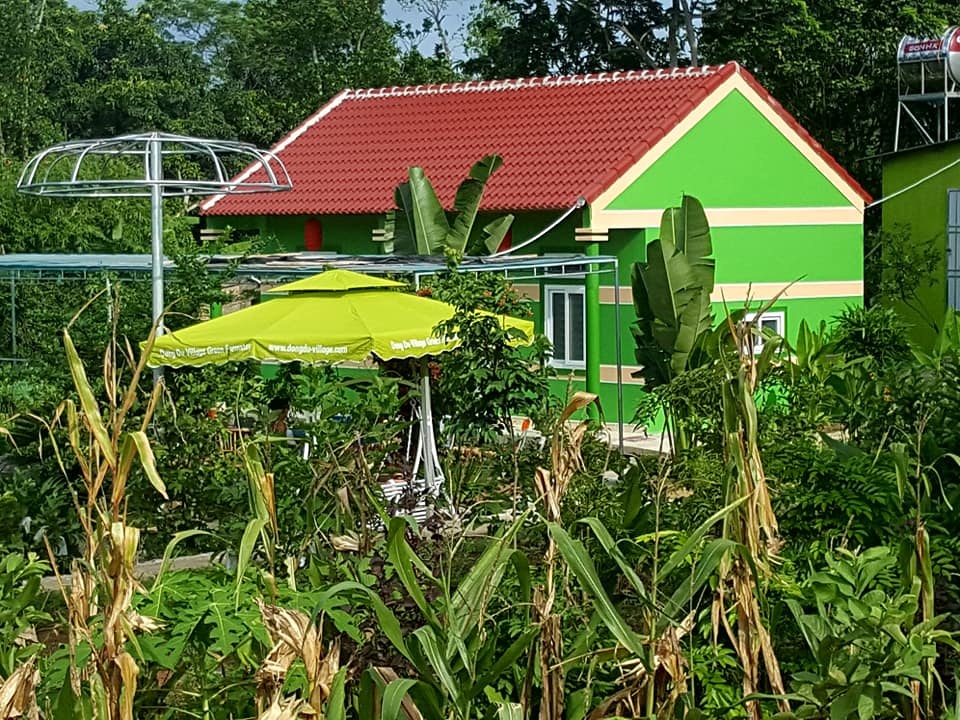Travel Blog
Dong Du Village Lakeside Farmstays
Pu Mat National Park, Con Cuong, Nghe An
Updated: 4/2/2018 | 10:32:06 AM
Pu Mat National Park, 120 km from Vinh city in Nghe An province, is the largest forest in north-central Vietnam and a world nature reserve. Pu Mat National Park is the central part of the Western Nghe An Biosphere Reserve, one of Vietnam’s six areas which have been recognized as world biosphere reserves. Pu Mat National Park not only has great values in biodiversity but also constitutes an attractive eco-tourist site in Central Vietnam.
Location: Stretching over districts of Con Cuong, Anh Son and Tuong Duong, Nghe An, about 120km to the northwest of Vinh City.
Characteristics: Pu Mat National Park is one of the first places where the rare animal of sao la (Pseudoryx nghetinhensis) is found out. The park is also home to the largest herd of elephants in Viet Nam.
Biodiversity
Pu Mat National Park was established in 2001 with an area of 180,804ha, including 94,804ha of core zone and 86,000ha of buffer zone. The park is one of the forests with high biodiversity conserving wild and rare genetic source. The flora system consists of 2,494 species, including 200 species of medicinal plants, many rare wood plants and hundreds of vegetables, fruit trees... The fauna system has 93 species of mammal, 39 species of bat, 361 species of bird, 459 species of butterfly, 53 species of reptile, 33 species of amphibian, 83 species of fish, 78 species of ant, 1,084 species of insect...
Pu Mat National Park is identified as the centre of Western Nghe An Biosphere Reserve recognized as World Biosphere Reserve in 2007 by UNESCO.
Tourism Activities
Pu Mat is an attractive ecotourism site with many beautiful landscapes such as primary forests of Khe Thoi, Khe Bu, Khe Choang; Sang Le Forest; Ta Bo Stream; Khe Kem Waterfall; Giang River; Tham Nang Man Cave... To Pu Mat, visitors also have the opportunity to explore unique cultural features of Thai, Kho Mu, Dan Lai ethnic groups living in the national park’s buffer zone.
Many community-based tourism models have been deployed in villages belonging to Con Cuong District, typically Nua Village of Thai ethnic group (Yen Khe Commune), Yen Thanh Village of Thai ethnic group (Luc Da Commune), Xieng Village of Dan Lai ethnic groups (Mon Son Commune), Khe Ran Village of Thai ethnic group (Bong Khe Commune)…
“Gold forests” of Nghe An Province
Pu Mat National Park is situated in the administrative areas of An Son, Con Cuong and Tuong Duong Districts, Nghe An Province. It consists of a central area of 94,804ha and a buffer area of 86,000ha and has rich biodiversity with many rare and precious fauna and flora. According to surveys carried out in recent years, Pu Mat National Park has nearly 2,500 species of plants and nearly 1,000 species of animals. The name Pu Mat is very familiar to scientists because the park is the place where the Sao La (pseudoryxnghetinhensis), a rare and precious species of animal, has been discovered.
Vo Cong Anh Tuan, a cadre of the Bureau for Scientific Research, Wildlife Rescue and International Co-operation of the Pu Mat National Park said that the conservation activities are very difficult because the number of plants and animals is great and they are scattered in a large area. To obtain precise information to facilitate the management work, the cadres of the park must take field trips and surveys which last nearly a month in deep forests. From these trips they can meticulously and precisely localize and define the plant community and the animals’ habitations to form a basis for evaluating and devising plans in sustainable and effective conservation.
We followed Tuan to visit the wildlife rescue centre, one of the most important professional organizations of the Pu Mat National Park. The centre is raising various species of porcupines, turtles and bears to serve research and conservation work. These animals were taken from different parts of the country. Most of them had poor health because they were young or wounded by illegal hunters. At first, the specialists at the centre studied their specific activities and then mapped out plans to treat, care for and raise them until they were healthy enough to be released into the natural environment.
Nguyen Tat Ha, another cadre in the centre showed us a clean cage where a fairly big Tibetan bear is kept. He said that the bear was brought from a forest in Ky Son to the Centre in 2008. It was small and weak and weighed less than two kilograms. Two years later, it weighed over 70kg with stable health and was able to withstand changes of the severe weather in the mountainous area in Nghe An Province.
Vo Cong Anh Tuan said that Pu Mat National Park is also a valuable area, in terms of conservation of species, for Laos and the entire Indochina area. If managed and protected well, the park will become an ideal place to preserve many rare and precious species of animals which are on the brink of extinction. With these special values, Pu Mat National Park is really an affluent “gold forest” area in Nghe An Province.
According to scientists’ research Pu Mat National Park has four species of endemic animals in Indochina. They include the Sao la (Pseudoryx Nghetinhensis), Annamite striped rabbit (Nesolagus spp.nov.), white-cheeked gibbon (Hylobates leucogenys) and yellow-cheeked black gibbon (Hylobates gabriellae). There are also the giant Muntjac, Truong Son Muntjac, red-shanked douc, tigers, elephants, striped civets, Malaysian bears, tibetian bears, crested arguses and bulls.
Tourism potential
Pu Mat National Park is the flagship park on the northern massif of the Truong Son Mountains along the Vietnamese-Lao border. The area contains some of the world’s most threatened species. Here, in these steep forested mountain slopes of the Vu Quang Nature Reserve and in the neighboring protected area of Pu Mat National Park, a team of Vietnamese and World Wildlife Fund (WWF) scientist recently discovered a new genus of large mammal, the sao la (Pseudoryx nghetinhensis).
Visitors taking Highway 7 from coastal Vinh to Pu Mat meander west through pure, rustic beauty towards the border. The park headquarters are near Con Cuong, a small “wild west” town perched on the banks of the huge and slumbering Ca River, which is itself nestled amongst precipitous karsts peaks.
Pu Mat true wilderness with spectacular features such as the Kem Waterfall is accessible only to well-organized expeditions. However, the reached buffer zone shares the park’s beauty. Park staff can direct visitors traveling on foot or b motorbike to ethnic Thai or Dan Lai (Tho) village and can even help arrange for stay in the villager’s stilt houses in the luscious, forested river valleys. Here, visitors can experience the park’s extraordinary diversity, although they wont’s glimpse the more magnificent wild animals, such as Asian elephants, tiger, sao la, Asian black bears, or yellow-cheeked gibbons.
Those who stop to rest or swim in the shimmering rivers may catch a glimpse of rare, giant black squirrels jumping through the forest canopy and might hear the crested argus, a beautiful pheasant with one of the world’s longest sets of tail feather. The buffer zone is the perfect place to see local people living together with the forest. Elderly Thai women search for gold, using stick to balance themselves in the rivers. Young men and women build large wooden waterwheels to irrigate their small fields. Local villagers will guide visitors through labyrinths of karsts caves during nighttime bat surveys. Many caves are over ten kilometers long. Surveys have shown that these caves may contain the greatest diversity of bat species in Viet Nam. Habitat destruction and hunting threaten the park’s animals and plant, which deserve the highest global priority for conservation. The Pu Mat National Park staff is working hard to save this jewel for future generations.
Pu Mat area is the main residence of the Thai ethnic group in Nghe An Province. In the Thai language, Pu Mat means “the highest mountain”. The Thai people in the Pu Mat area live in hamlets. They grow rice, reclaim land for cultivation, raise cattle and poultry, make bamboo and rattan products and weave traditional brocade cloth. Their brocade cloth is well known for its bright colours and unique decorative patterns. A small population of the Kinh and the Dan Lai people also live in this area. The Dan Lai people live mainly in the Co Phat and Bung Hamlets of Mon Son Commune, southeast of Pu Mat National Park.
Visiting the hamlets in Pu Mat area, visitors will have an opportunity to enjoy the unique festive space of the ethnic people. They can participate in the Sap dance, drink the Can wine (wine drunk out of a jar through bamboo straws) and learn about the local customs and habits. Pu Mat National Park has 1,841m-high Pu Mat Mountain which is dubbed as the second Fansipan in Vietnam. Visitors to the park are very interested in the wildness of the primeval forests and beautiful landscapes. There is the Kem Waterfall, 150m high, which looks like a white silk band. Its water runs all year round, spreading a spray against the heat of the southwestern wind, relieving the typical scorching weather of the central region in summer. The Moc Spring with clear water is cool in summer and warm in winter, so it is very attractive to visitors. Coming to this area, visitors can take a boat ride upstream on the Giang River to discover the splendid and superb beauty of the mountains and forests. They can also walk in the forests of Sang le trees (Lagerstroemia tomentosa) to see century-old trees which are about 50m high with a large canopy of leaves, listen to birds singing and enjoy golden sunbeams through spaces between the leaves at sunrise or sunset.
To increase the attractiveness of this special tourist site the management board of the Pu Mat National Park ordered construction of traditional craft villages of the Thai ethnic people to help visitors learn more about the customs and daily activities of the local people. The Western Nghe An Biosphere Reserve with Pu Mat National Park as its centre was recognized as a World Biosphere Reserve by UNESCO in September 2007. It is the sixth biosphere reserve in Vietnam recognized by UNESCO. With an area of 1,303,285m2 the reserve is the largest in Southeast Asia.
(Source: Dong Du Village Lakeside Farmstay)
Other news
- GITE RURAL CHEZ THUY FARMSTAY - un charmant hébergement en nature
- Off the beaten paths in Halong Bay & Lan Ha Bay
- Pu Mat National Park and Kem Waterfall
- Nghe Tinh Vi giam folk singing
- Sunflowers in Dong Du, Nghia Dan brighten up the lives of Vietnam youths
- Pu Mat Natural park, a hidden treasure in Central Vietnam
- The Best Beautiful Floating Village in Vietnam
- A Beautiful and Stunning Cat Ba National Park
- Longest Zip Line in Quang Binh, Centravel Vietnam
- Cat Ba island, a hidden treasure of Vietnam











